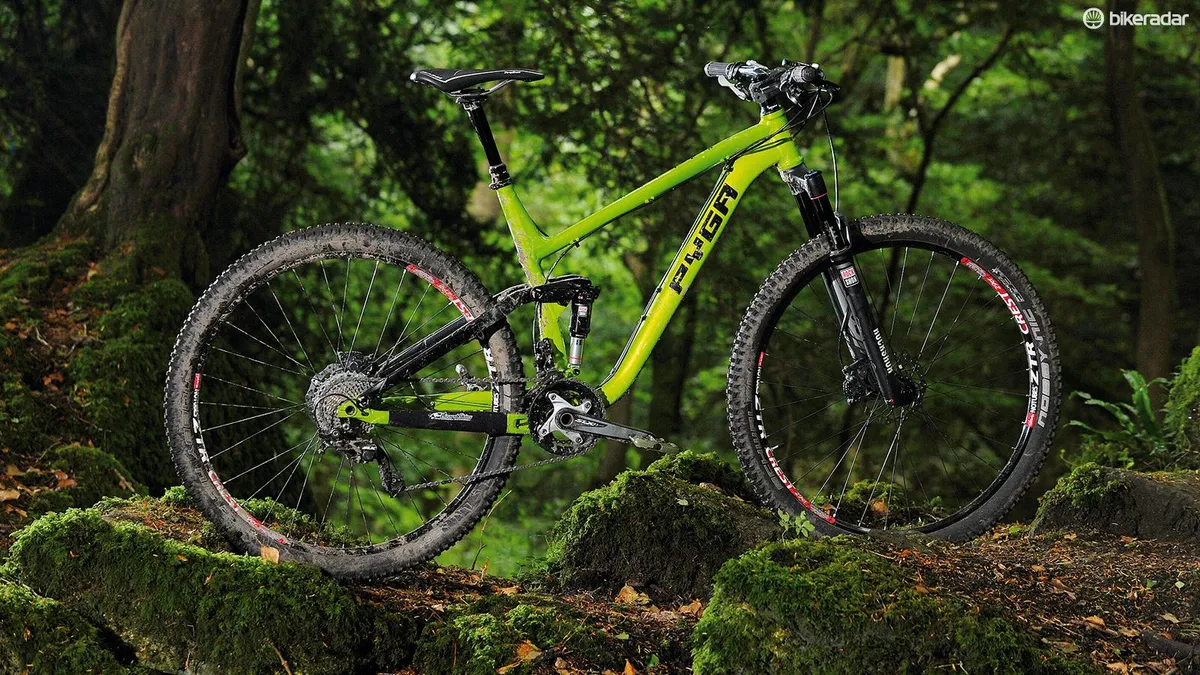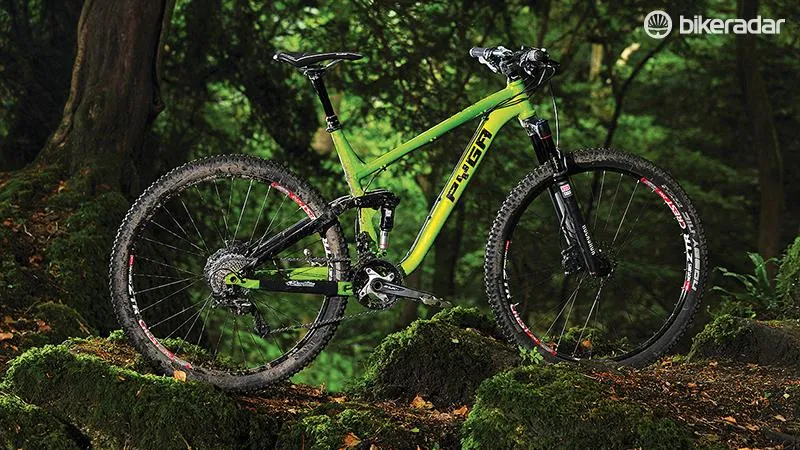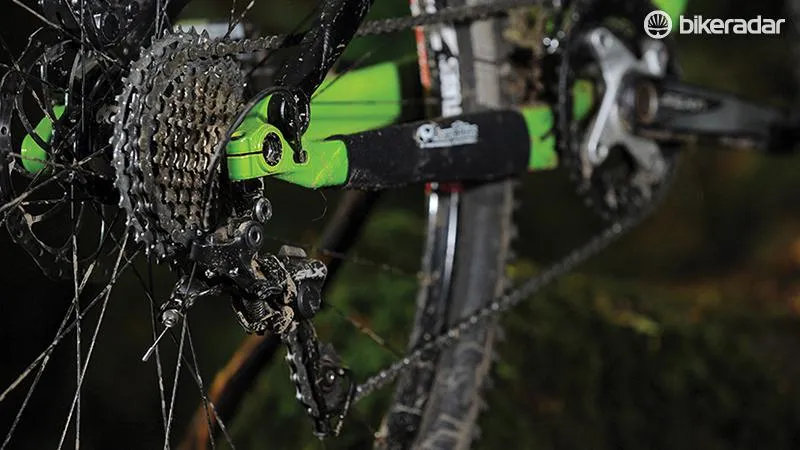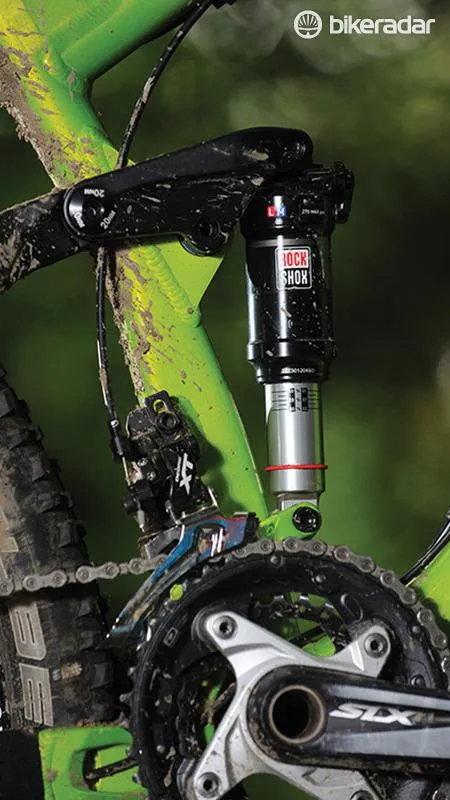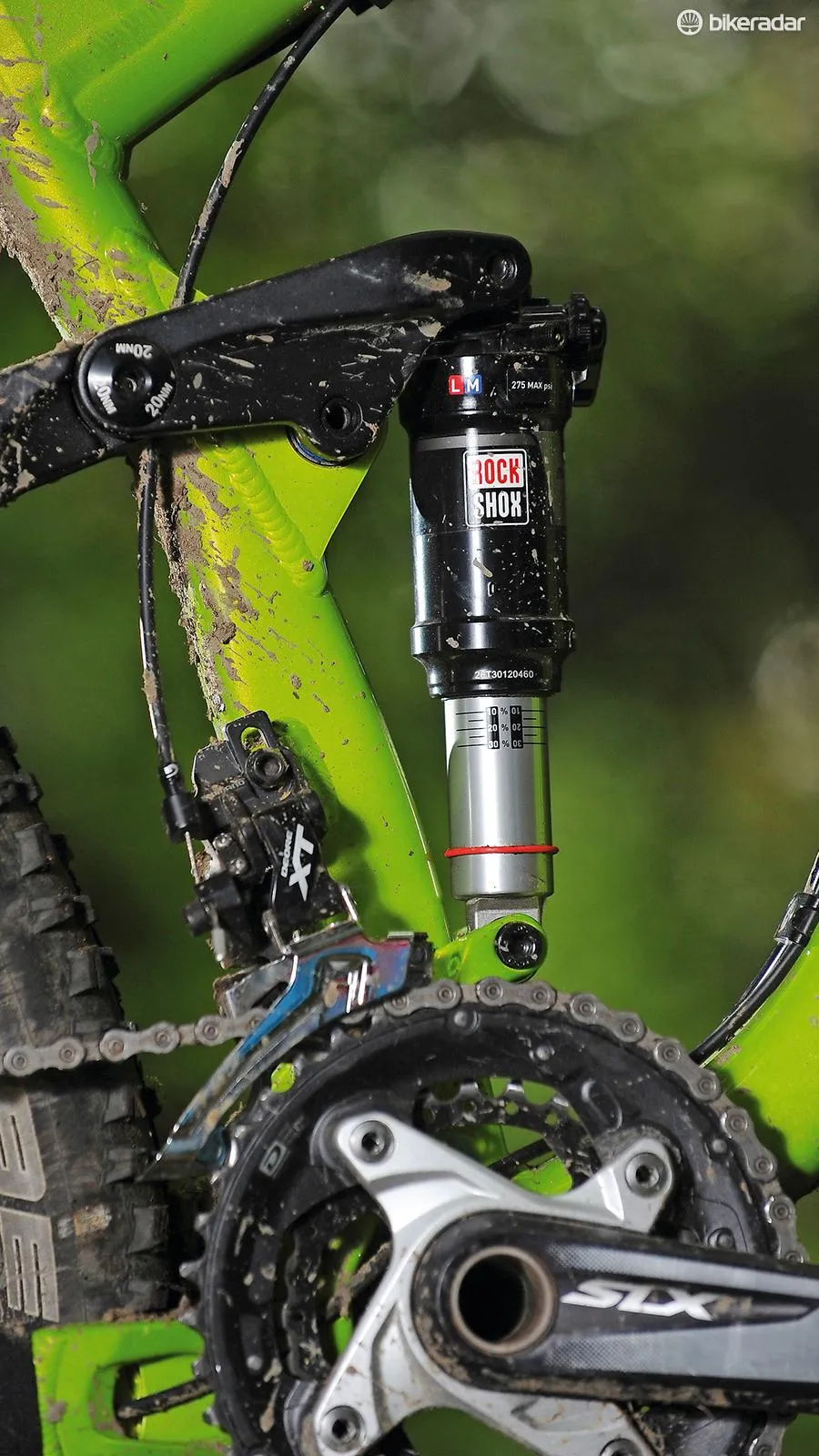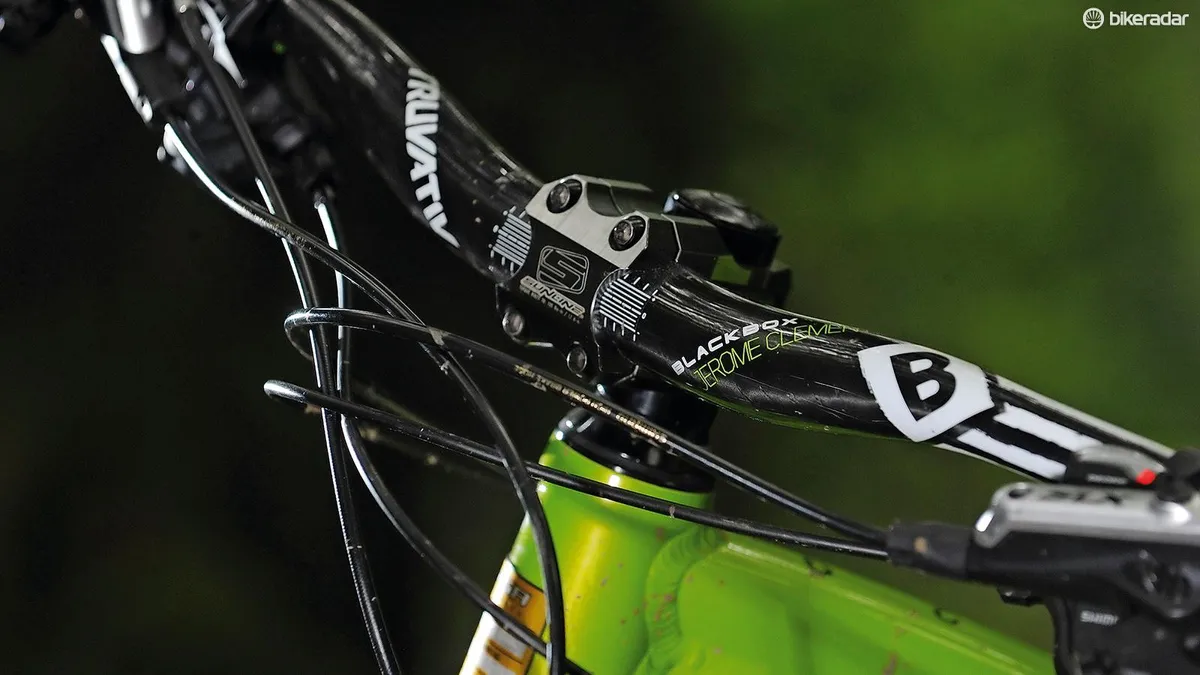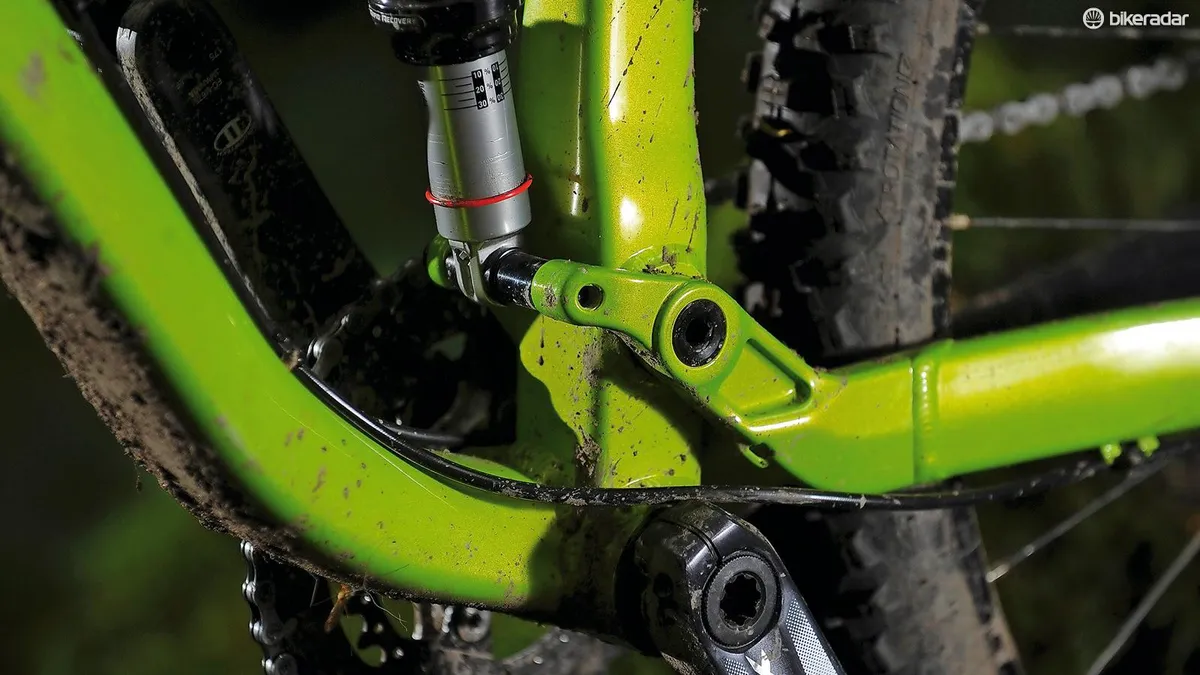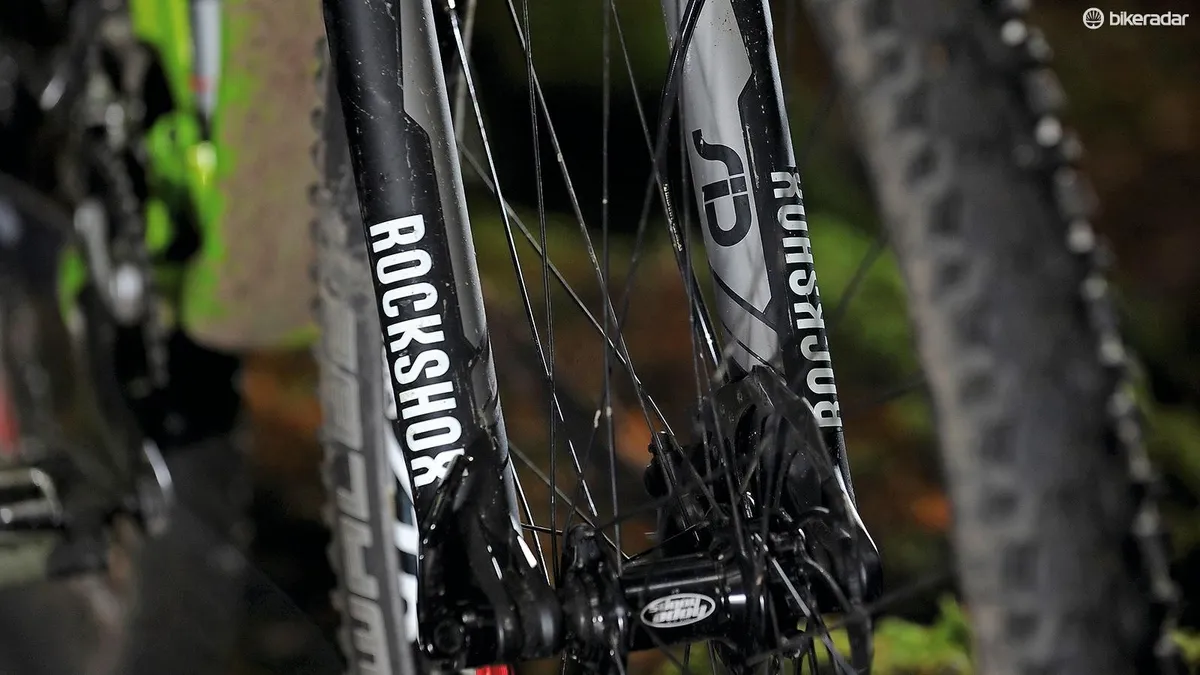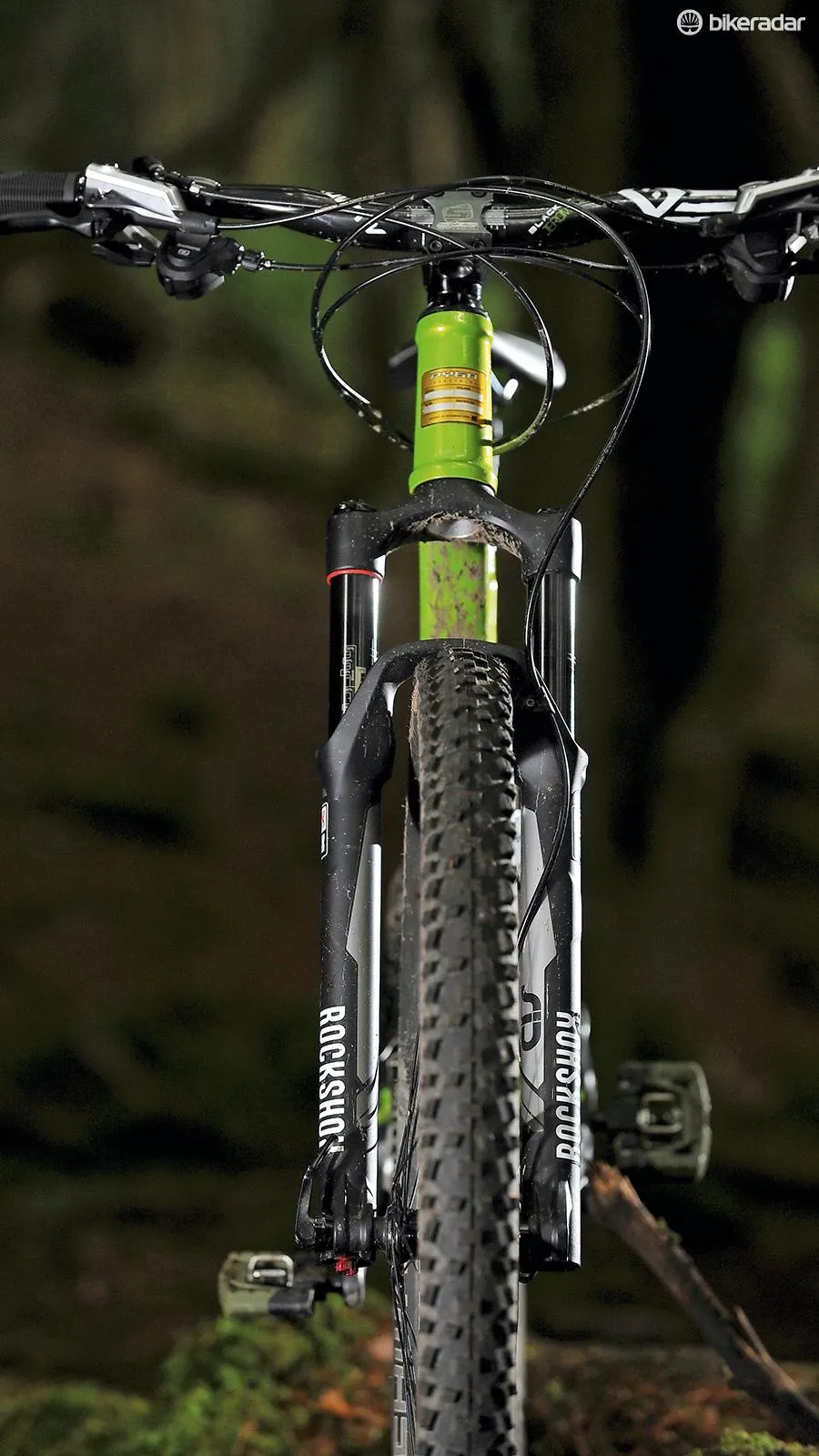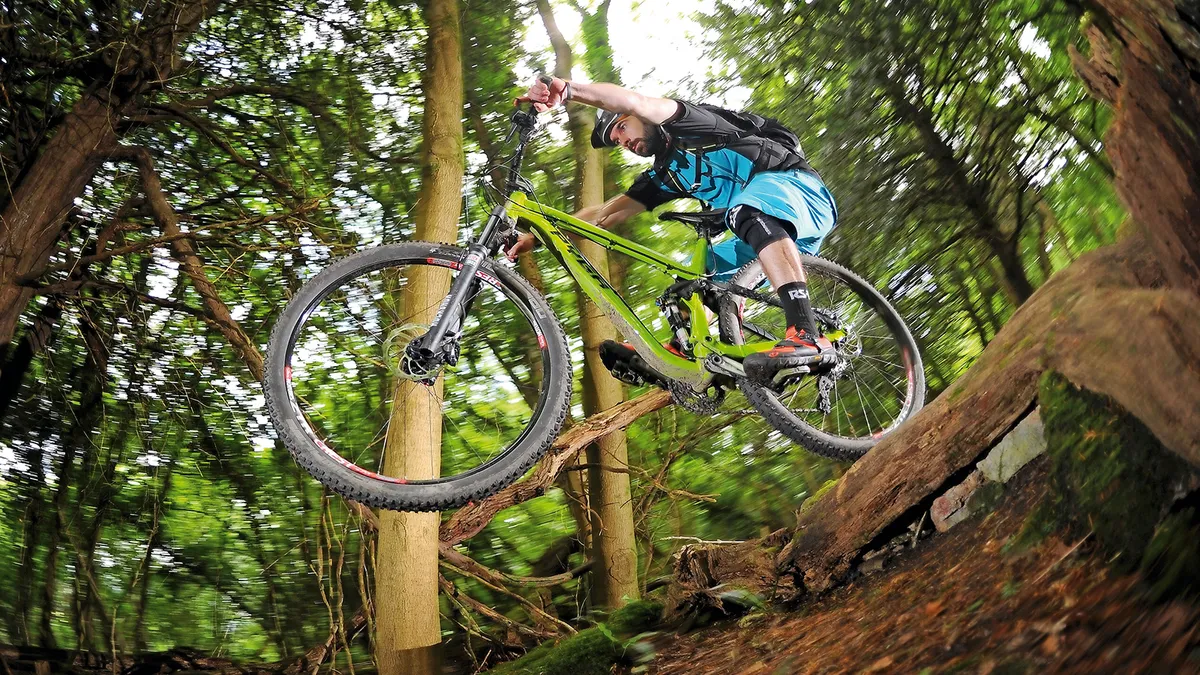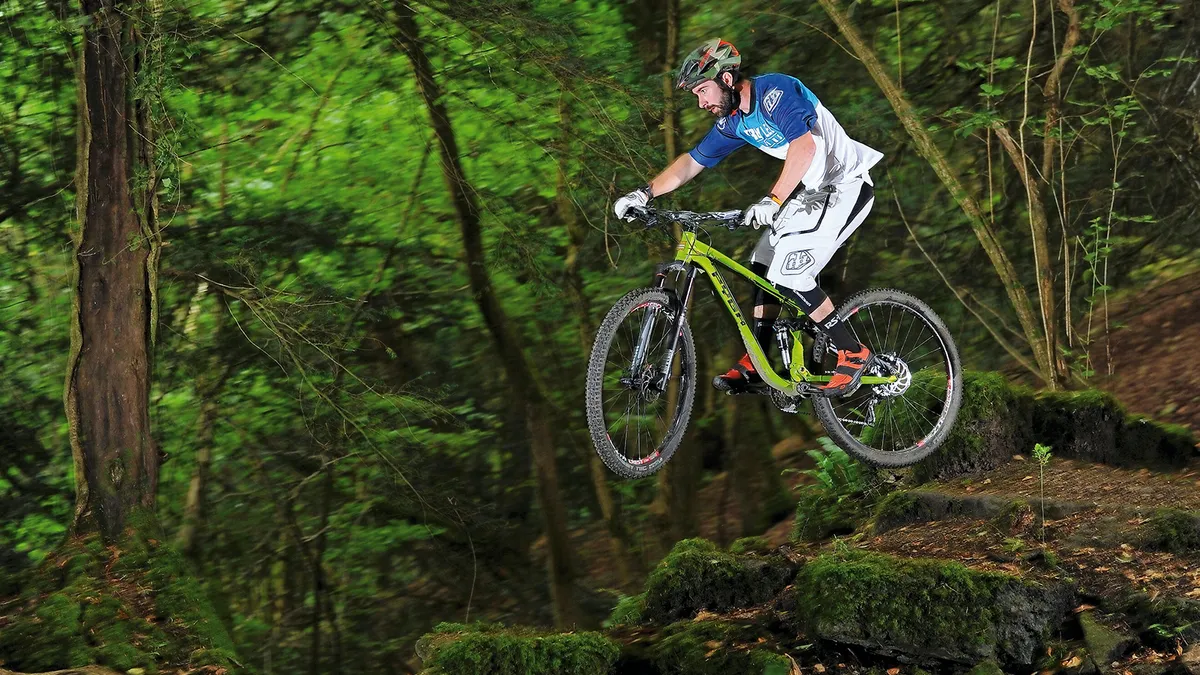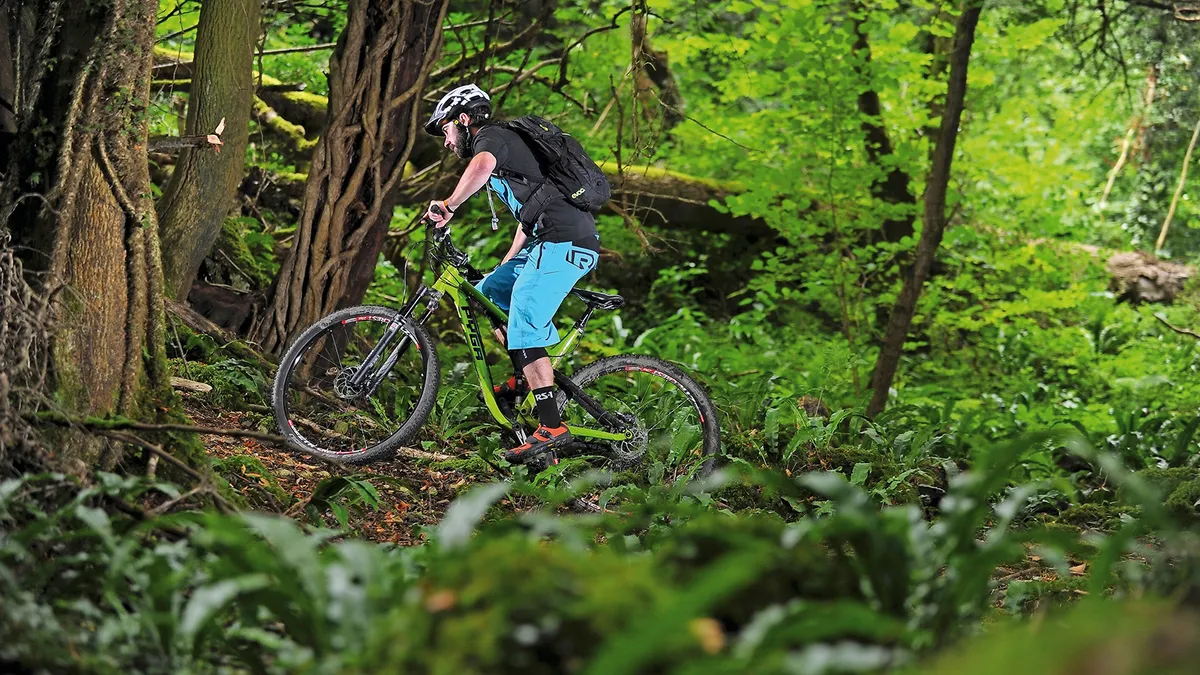If you shouldn’t judge a book by its cover, you shouldn’t judge a bike by its head badge. Especially if the badge says it’s an orange 650b bike and it’s actually a green 29er.
That’s one of the only glitches on the otherwise outstanding Pyga OneTen 29 – and if you like blasting techy singletrack we’re sure you’ll just laugh about it like we did.
Frame and equipment: enduro ready
Pyga has been around for a few years, since top southern hemisphere designer Patrick Morewood split with the bike company that carried his name and started a new one. Having loved the hard-as-nails short travel 650b we tested last year we were super-keen to get on its 110mm travel 29er as soon as possible. Within seconds of hitting our local singletrack, scything round the first bend then hopping into and manualling out of the normally tricky step-up chicane round a fallen tree it was obvious it was well worth the wait.
It’s a sign of the priorities of this machine that despite a cross-country amount of travel our sample came with a 40mm stem and 740mm bars, and they totally suit it. All three frame sizes are long for their height so they work really well with a short stem. The frame is also extremely stiff so there’s no danger of the big bars tying the inset bearing head tube and long shared seam top and down tube junction in knots, however hard you wrestle it.
The triangular section of top tube is locked against the distinctive extended seat tube with a big reinforcing gusset and another similar box section carries the rocker link pivot. The lower end of the seat tube expands into a big square section that swerves to the offside to create chainring clearance for the chunky forged chainstay front end. The main pivot is driven through the centre of this tube too and the stout chainstay tips are tied together with a Syntace X12 142x12mm screw-thru axle. The tapered seatstays use a double-sided mount onto the chainstay and align very neatly with the short stout rocker linkage.
The result is an seriously rigid unit, whether you’re judging it in terms of bar to bike, pedal to back wheel or bodyweight braced against a berm strength. The low bottom bracket trades more regular crank to ground contact with the potential to hold a carving line with rock solid authority.
Ride and handling: looking lively
Final build will obviously determine how much of that precisely planted frame potential gets transferred onto the trail. In this case there’s noticeable turning twist in the 120mm SID fork and the Stan’s Crest rims can twang off line suddenly under side loads. The frame still tells you exactly where/when that’s happening so you can push the limits of the pliable components with inspiring interactivity through feet and hands.
The lighter components also give the OneTen a surprisingly keen and lively feel for such a tough 12.8kg (28.2lb) machine. The carefully placed single pivot is designed to give excellent suspension stability with a single ring but still works well with the SLX double fitted here. The only time we got it to squat obviously was stomping the torque down with the shock in full open mode sprinting into a descent. Otherwise the slightly chain leveraged suspension feel gives a great balance of small bump and chatter-smoothing traction with instinctive feedback for exactly what’s happening under the back end.
The relatively steep head angle keeps the steering fast and reactive, weaving the 740mm bars through tight tree lines and climbing switchbacks with excellent flow for a 29er. This again feeds into the rich interactivity of the Pyga ride, creating a bike you just want to blast down, up, along or off the trail as fast as possible as often as possible.
If you’re happy to haul more weight uphill then the frame is cleared for up to a 140mm fork. When we plugged a Pike and sturdier Spank Oozy wheels in the Pyga was a different machine. The 35mm rather than 32mm legs and broader, stiffer rims transfer the frame precision right down into the dirt and makes the South African feel like it’s hit the gym hard.
Rather than skipping over rough sections and shaking its head under high braking and climbing loads it drops its shoulder and charges through. For the sake of slower, more deliberate steering through tight singletrack it erases worries about the SID twisting under and tripping up when braking hard or turning in tight. You’ll want a Schwalbe Hans Dampf or something similarly grippy up front rather than the fast but less aggro Nobby Nic.
The burlier build also lets you appreciate the effectiveness of the ‘active’ brake position, which keeps the back end balanced however hard you’re hauling the anchors. The slightly higher bottom bracket helps you stay on the power over more stuff too – and suddenly this is a bike that’s all about knee pads and serious descent lines.
What’s really impressive is the way the rear is totally comfortable in either situation. It’s a worn out cliché but by squeezing the shock between the rocker linkage and the extended tips of the chainstays – rather than the mainframe – the rear end really does feel bottomless.
Obviously there are limits to the 110mm of rear wheel travel, but they’re further away than you’d think and you have to work the bike hard to find them. It chops the tops off steps and sucks up large drops without stumbling. The rocker alignment means there’s a natural initial resistance to movement (which can be tuned by altering the sag level subtly) but otherwise the shock feels very consistent and neutral. As with most Monarch shocks it definitely feels damped rather than dynamic but if you want a more mobile and sensitive feel then you just need to add a larger volume DebonAir sleeve.
This is a minimum fuss, maximum ride machine that’s all about powering the big ring and dropping the Reverb to wring maximum fun out of every inch of trail, not toggling shocks and tiptoeing through tech sections like a lot of 110mm bikes.
Spec as tested
- Frame: Hydroformed 6066-T6 aluminium, 110mm (4.3in) travel
- Fork: RockShox SID RCT3, 120mm (4.7in) travel
- Shock: RockShox Monarch RT3
- Drivetrain: Shimano SLX
- Wheelset: Stan’s ZTR Crest rims on Hope Pro 2 EVO hubs, Schwalbe Nobby Nic Evo 29x2.25in tyres
- Brakes: Shimano SLX
- Bar: Truvativ Jérôme Clémentz BlackBox, 750mm
- Stem: Sunline V1 AM, 40mm
- Seatpost: RockShox Reverb Stealth
- Saddle: Massi ProDue
- Weight: 12.8kg (28.2lb)
